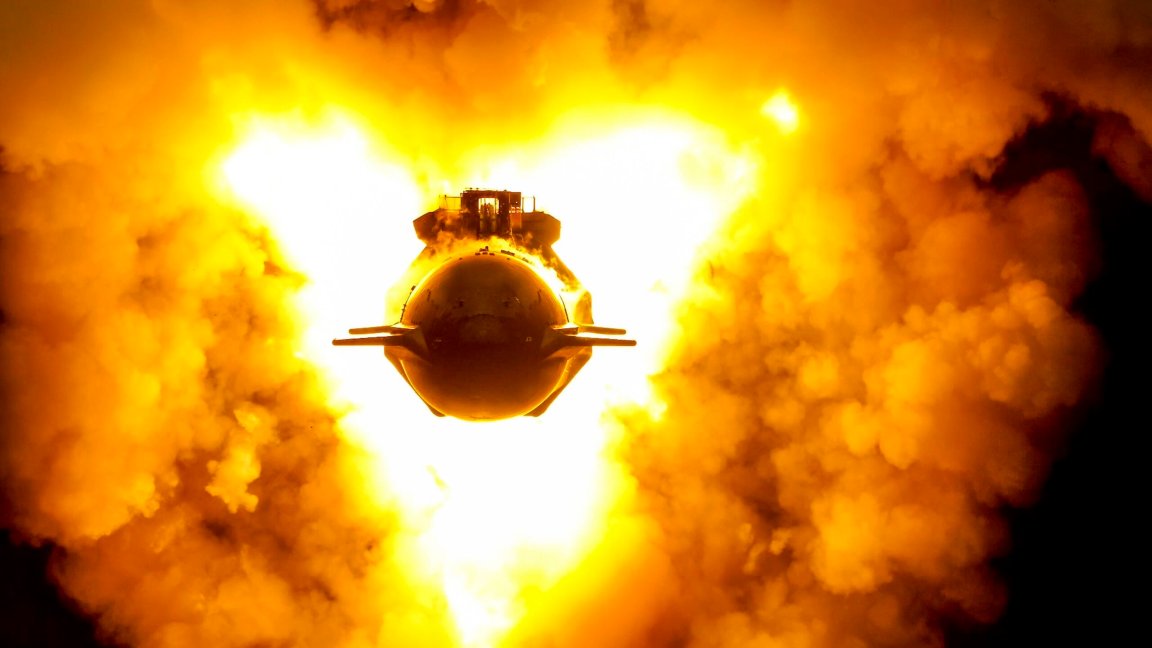
Warm Up
Earlier this month, SpaceX CEO Elon Musk promised that Starship would be taking to the skies for its second flight test in the next six to eight weeks.
Though questions still linger over the plausibility of that schedule, Musk and his engineers seem to be making steady progress. On Monday, SpaceX conducted a static fire test of Ship 25, the latest Starship prototype, lighting up all six of its Raptor engines in an all-out blast that lasted between five to six seconds.
The static fire test, a standard precursor to an actual launch, took place at SpaceX’s flagship facility Starbase in Boca Chica, Texas, where Starship conducted its inaugural orbital flight in April — an exercise that ended with the rocket exploding.
Coming in Hot
There’s still plenty more work to be done. Just days before the static fire test, Musk said in a live Twitter discussion that SpaceX will need to make “well over a thousand” changes ahead of its next launch, as quoted by Gizmodo, adding that he estimates a “60 percent” chance of success this time.
The most significant of those tweaks is switching to what’s called a “hot staging” approach for achieving a separation of the rocket’s two stages, which failed to decouple during its first orbital flight after several engine failures.
With hot staging, the second stage — in this case the Starship spaceship — fires up its engines while some of the engines of the first stage, the Super Heavy booster, are still on. Typically, a booster is completely shut off before the engines of the spaceship are activated.
According to Musk, using hot staging will prevent a temporary loss of thrust during the separation sequence, bumping up Starship’s already gigantic payload capacity of 100 metric tons by ten percent.
But that means that SpaceX will have to fit the reusable booster with an extension that will direct the exhaust of the upper stage away from the rocket so it doesn’t get destroyed.
“This is the most risky thing, I think, for the next flight,” Musk said.
To-Do List
The launch date for the second flight is still up in the air, though Musk remains ambitious.
“We think, probably, the launch pad upgrades, and the booster and ship, are ready in about six weeks,” Musk said, per Gizmodo.
Along with engineering hurdles, SpaceX faces another massive obstacle in the Federal Aviation Administration, which has grounded Starship pending an investigation. The FAA is concerned about the loads of debris blasted into the surrounding environment by Starship’s launch, including a heavy cloud of sand and ash that reached nearby cities.
With all that being said, Musk’s ambitious timeline is sounding like a big ask.
More on SpaceX: Private Spacecraft Lost in Accident After SpaceX Launch